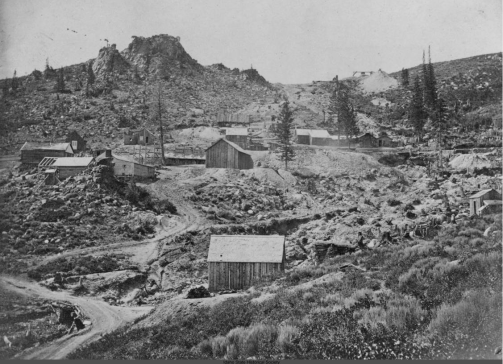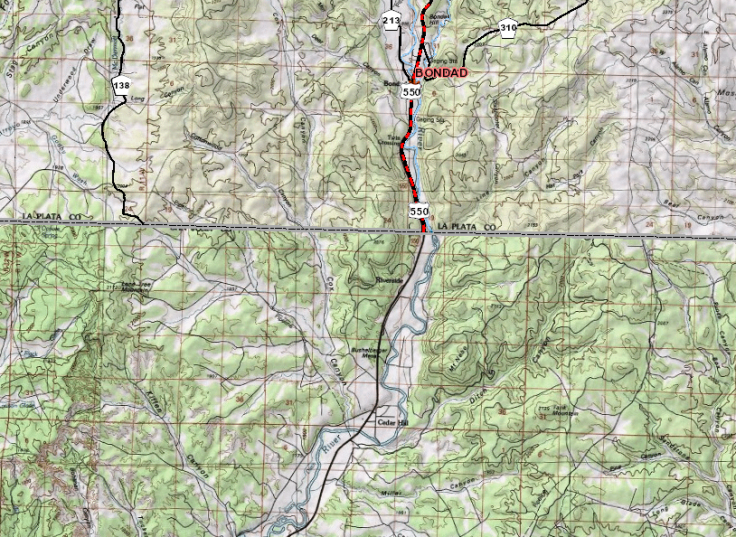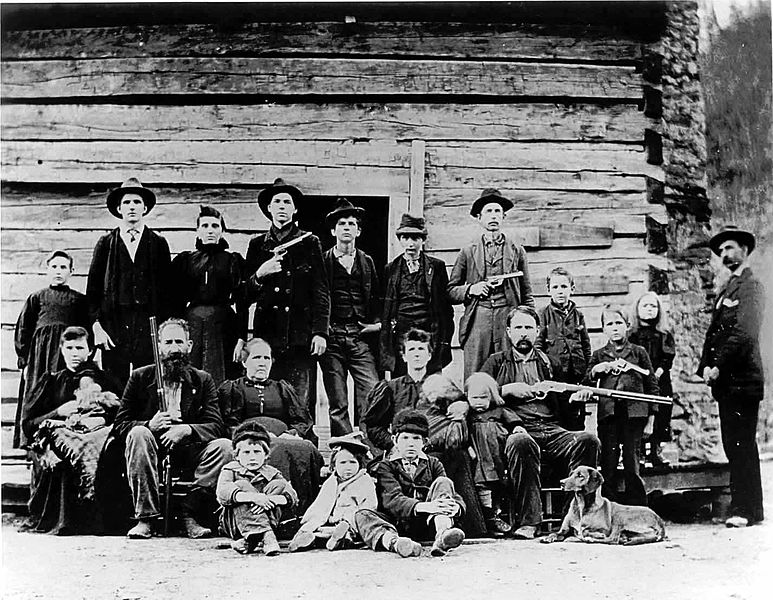By Eilene Lyon
The problem with starting a feud is – how do you ever end it?
We’ve all heard of the long-running Hatfield-McCoy dispute. While theirs might be notable for its longevity, feuds are hardly uncommon. Not all are deadly serious, but every one is toxic.
Here are two historic feuds I’ve come across recently. The first took place in the mines of southwestern Idaho in the 19th century. The other happened right here in my backyard just over 100 years ago.
If anyone thinks that open-carry is a historic American ideal and should be allowed even today, be sure to read this piece on gun laws the founders loved.
The Owyhee War 1868

This conflict erupted between two mines near Owyhee Peak when the competing claims converged from either side of a ridge. Each company argued the other was invading their vein, worth hundreds of thousands of dollars. Legal proceedings were too slow, considering the daily take at stake. This feud largely occurred 300 feet below ground.
The Ida Ellmore mine was owned by J. Marion More, an early pioneer in the Boise Basin, popular with the locals. He’d invested his entire fortune in quartz mining.
The Golden Chariot was owned by Hill Beachy, a former hotelier in Lewiston and wealthy operator of stage lines in the region, and his partner, George W. Grayson. The workers in each mine sided with the owners, so no impartial determination about the ore could be found. Violence erupted as a result.
Half the employees of each company began staging a military-style battleground in the mines with bunkers and tons of weapons and ammunition. Shots and grenades rang deafeningly off the rocky walls of the mine tunnels.
Occasionally, a body would be removed and buried. Later, an inspection in the mines revealed a roof support post, 15 inches in diameter, had been nearly cut in two. It was estimated it had been hit by nearly 2000 bullets.
Mr. More had the support of people in Silver City. Beachy and Grayson the support of Boise City. Both places sent reinforcements. Finally, Governor Ballard sent John R. McBride, Chief Justice of the Territorial Supreme Court, and known to both parties, to see what he could do.
By the time McBride arrived in Silver City, the two sides had come to a compromise and ceased hostilities. Or so it seemed.
That evening, McBride went to discuss the situation with Grayson, who was staying in the same hotel, as was Beachy. Soon they heard a commotion outside and shots were fired. Sam Lockhart, a friend of Beachy’s had allegedly shot and mortally wounded Mr. More.
The locals were ready to lynch Lockhart for the deed. Beachy pulled his gun and threatened, “The man who comes to take Lockhart out of this hotel without a warrant, will die before he reaches the head of the stairs!”
McBride managed to restore calm and convince the mob to allow the sheriff to handle the affair. Lockhart and Grayson were duly arrested.
It turned out that More, though the mine controversy had been settled, still felt wronged. After some heavy drinking, he’d become belligerent and when he encountered some of the Golden Chariot faction in the street, he’d raised his stout cane to strike Lockhart. Lockhart’s friend, a man named Fisher, responded with gunfire.
In the end, More died of the gunshot to his lungs. Lockhart, who’d been shot in the arm, had it amputated, but then died of gangrene a few weeks later.
The Cox-Truby Feud 1911 – 1913

This family feud was a classic in the cattle vs. sheep wars. Though the author of the small booklet I have detailing the story worked hard to give both sides the benefit of the doubt, it’s clear where the blame lay.
The young Truby brothers were looking for trouble when they learned the older Ike Cox had begun raising sheep. They looked to resolve their “beef” with Cox by violence from the get-go.
The Coxes and Trubys had originally come from Texas and settled in the Animas River Valley around the New Mexico-Colorado state line. Both ran cattle in the Cox Canyon area. But when Ike Cox started running sheep in 1904, tempers flared. For some years the sides merely made threats, but took no real action.
Cox took his sheep east to the Pine River for a few years, but when he moved back to the Cox Canyon area in 1911, the Trubys were more determined to put a bullet into him. Bill and Sam Truby accosted Cox near the Florida River where it meets the Animas on April 23. Cox was returning home from a night spent in Ignacio. Bill and Sam rode up on either side of him and attempted to pull him from his horse.
Cox fired at the two men and Bill wound up dead. Sam took up chase as Ike Cox rode to Durango to turn himself in to the sheriff. He was released on bail, but stayed in town.
Bill Truby’s widow, her family, and the Truby’s hatched a plan. They persuaded a young employee of theirs, Andrew Ruple, to kill Ike, offering him a goat herd and a race horse as payment. It was said that Ruple was “simple-minded” and possibly had a crush on Bill Truby’s widow, Cordula.
On June 6, 1911, Ruple arrived by train in Durango. Ike Cox was walking with an undersheriff when Ruple fired three shots, hitting Cox. Ruple made his escape but was arrested a week later. After hearing his story, the sheriff arrested Sam Truby and put out warrants for members of his clan.
Ike Cox, against all expectations, survived his wounds and was put on trial in late November and was acquitted on December 9th. He decided to move east to Pagosa Springs. Not surprisingly, the Trubys weren’t satisfied with the outcome.
In June 1912, the Truby clan went to trial in Silverton, 50 miles to the north. Despite testimony by Ruple, they were also acquitted. That should have put an end to things.
When, in the summer of 1912, Ike Cox learned that Ben Nelson had been offered $500 by the Trubys to kill him, Cox left Pagosa to be with “my own people.” If he was to be killed, he didn’t want it to happen away from home.
A final battle took place in Cox Canyon in November, once again instigated by Sam Truby, who wound up dead on Sunday, the 10th. Cox went on trial in March 1913. Again, he was acquitted. Though hostilities officially ceased then, the enmity still exists between these two families today.
Feature image: The Hatfield Clan in 1897 (Wikimedia Commons)
Sources:
Craig, Philip. 2002. The Cox-Truby Feud. San Juan County Historical Society, Flora Vista, NM.
McBride, John R. The Owyhee War: Silver City, Idaho, 1868. Available at the Idaho State Archives: http://idahohistory.cdmhost.com/cdm/compoundobject/collection/p265501coll1/id/269/rec/49

Interesting, but seems insane from where I stand! So, why would they be annoyed about Cox farming sheep? I know nothing about ranching.
LikeLiked by 2 people
I’m not an expert, but I believe it has to do with how sheep graze – they pull the grass up by the roots, leaving bare soil. Doesn’t leave anything for the cows.
LikeLiked by 3 people
People who swear by guns are of a very low caliber!
LikeLiked by 2 people
😂
LikeLike
We have a Russian saying: Poor peace is better than a good feud. I guess its fitting here
LikeLiked by 1 person
Excellent saying!
LikeLiked by 1 person
My lieutenant spent a year in Bosnia working for the UN as the police chief of a moderate sized town. When he returned he compared it to Appalachia with automatic weapons. Aside from the religious tensions there were blood feuds, in one case over a cow that was stolen several hundred years ago.
LikeLiked by 1 person
How crazy is that?!!
LikeLike
I don’t get feuds, but maybe I’ve never cared enough about things and places to be in a feud. Whenever I read anything about feuds, like this excellent post, I start singing “oh the farmer and the cowman should be friends” from Oklahoma. I don’t know the proper name for that song, but it has stuck with me over the years.
LikeLiked by 1 person
I don’t recall ever hearing about that song, but it seems fitting. I’ll never understand feuds, either, but if people are going to be that disagreeable, they shouldn’t have guns.
LikeLiked by 1 person
Fascinating stories!
LikeLiked by 1 person
Killing over money – old as time!
LikeLiked by 1 person
That’s for sure!
LikeLiked by 1 person
The illustration says a lot. Especially the young boy on the right holding a handgun, finger on the trigger, pointed at the crotch of the man next to him. Apparently gun safety wasn’t part of their lives. It probably wasn’t loaded, but still…..sheesh.
LikeLiked by 1 person